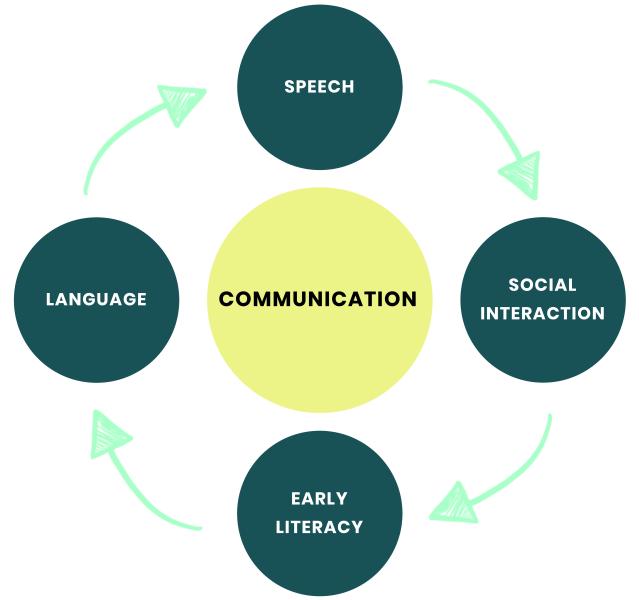Key points about communication
- communication is the way we connect and interact with people
- speech, language, social interaction and early literacy skills are all parts of a child's communication
Why communication is so important for children
Communication is the way we connect and interact with people. It's part of our identity and culture. It helps us to learn, interact with others and make friends.
Communication involves a range of different skills. Tamariki (children) need to be able to:
- understand what people say to them
- use words and sentences to get their message across
- speak clearly
- understand and use gestures, signs and body language
- look, listen and take turns in a conversation
Speech, language, social interaction and early literacy skills are all parts of a child's communication. These parts develop together and support each other.

Source: KidsHealth
Diagram adapted from Much more than words | Manuka takoto, kawea ake (2014) resource.
How children develop their communication skills
Communication is the foundation for learning and development and is possibly the most important skill a child will ever develop. Communication develops over time and tamariki go through stages in their communication. Some tamariki go through these stages quickly and some will take longer.
Communication development by age and stage
You can check some information about typical communication development in young tamariki, by age group. There are ideas for supporting your child's communication development, using their skills and interests.
You'll also find suggestions about what to do if you are worried about your child's communication development.
Find out about the development of communication skills in pre-school tamariki by age group.
Communication Development: By 1 Year
Communication Development: By 18 Months
Communication Development: By 2 Years
Communication Development: By 3 Years
Communication Development: By 4 Years
Communication Development: By 5 Years
Communication development varies across languages and cultures
Many tamariki live in homes where family members speak more than one language. This provides an opportunity for tamariki to be multilingual. Encourage and value this. The best models for tamariki are for the adults around them to use the language they are most comfortable and familiar with.
Supporting your child's communication development
Tamariki need the adults around them to actively support and encourage their communication development. The more we know about how to support and encourage, the more we can help tamariki develop their communication skills through play and social conversations in real-life situations.
You might like to check these other pages in KidsHealth.
Acknowledgements
The content on this page has been produced in collaboration with the Ministry of Education and adapted from Much more than words | Manuka takoto, kawea ake (2014).
'Parts of communication' diagram adapted from Much more than words | Manuka takoto, kawea ake (2014) resource.
References
Lowry, L. 2014. Intervening with Dual Language Learners. The Hanen Centre, Toronto, Canada.
Ministry of Education. 1996. Te Whāriki. Wellington: Learning Media.
